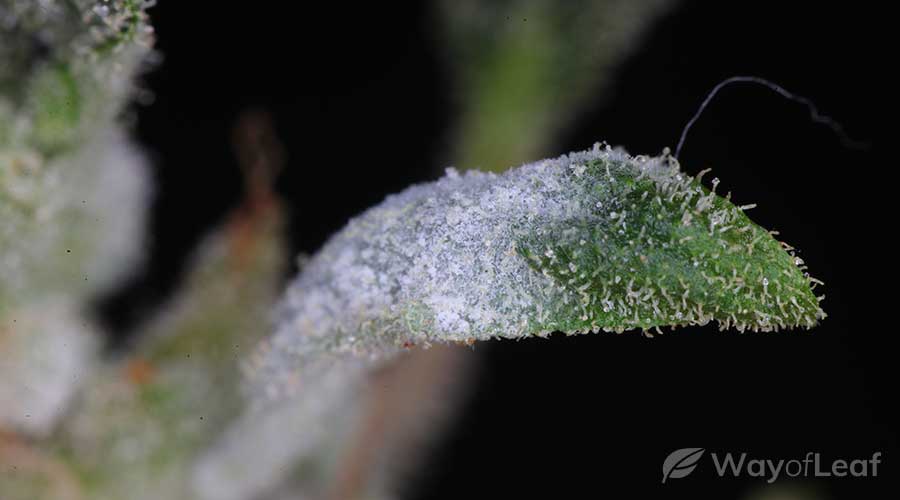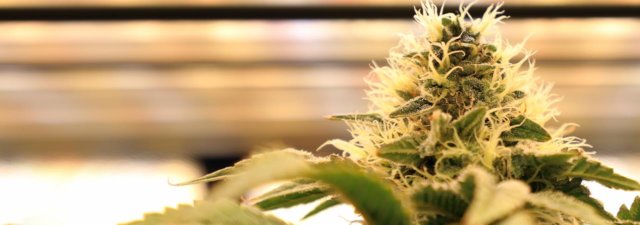Mold spores are all around us and can be especially damaging to human health if consumed. This is why, when it comes to cannabis, it’s important to protect your consumables, as you don’t want to be wasting your products, harming your body, and losing money all at once.
If you’re wondering how long it takes before weed gets moldy, be advised that there are multiple factors that come into play.
The world of marijuana storage has come a long way since the olden days, which included plastic baggies or maybe (if you were lucky) an empty prescription medication container. Although these methods can sometimes help retain some freshness and protect the herb for a little while, they aren’t doing much to prevent any possible mold from developing.
Nowadays, cannabis storage technology has improved immensely, making it that much simpler not to need to worry about your weed anymore. But even with advanced technologies, everything has its limit of preservation. In this article, we discuss how long you can store weed before it gets moldy, but be forewarned – the answer just might surprise you.
How Long Does Weed Stay Fresh?
When it comes to marijuana, freshness and “mold-free” should not be synonymous. Your cannabis will stay fresh for a certain period of time, but just because it is no longer “fresh” does not necessarily mean that it’s moldy.
Freshness simply implies that the herb is not so dry that it becomes crusty and that its pungency, aroma, and usual coloration still remain. It is said that with proper storage practices, your good green stuff can be kept for up to 6 months (but this doesn’t necessarily mean it’s off the hook from getting moldy during that period).
If you’re more concerned about your bud drying up, be sure to keep it in an airtight container that is not too big for the amount of herb and away from too much light or heat exposure. In terms of how long it takes before weed gets mold, well, that’s a different beast altogether.
How Does Weed Get Moldy?
Two main kinds of mold can affect cannabis. One of them is generated during the cultivation process before the ganja has been harvested, while the other only occurs after curing has already happened.

Botrytis cinerea, also known as the infamous “bud rot,” is a molding process present during the cultivation of the plant. It begins to grow all the way down at the stem of the buds and slowly makes its way into them, sometimes completely inhabiting the flowers from the inside out.
Moldy weed kills useable buds, turning them into a squishy and moist mess that can ruin entire colas, making them non consumable.
This molding process is usually caused by humidity and a lack of airflow, which causes growth encouraging moisture to get trapped inside the dense colas and buds, leading to the bud rot. If you’re not a cannabis cultivator, you won’t need to worry about this type of rot because if you’re buying your bud from a reputable dispensary, they won’t be selling marijuana that has bud rot in it. Most of all, you’ll be able to see a white film layer that starts at the stem and goes upwards, so there will be a visible presence if this is the situation.
The other type of possible mold that affects cannabis is known as aspergillus. This is an airborne mold usually and can grow not only on marijuana but on fresh produce and other foods, too. It is quite difficult to notice at first with the naked eye, and especially with a very frosty cannabis bud, it could be mistaken for the frosty crystals.
There are a few hundred different types of aspergillus mold, and the spores are just about everywhere – both indoors and outdoors. What causes the mold to grow, however, depends heavily upon conditions. Environments that are humid, or with a source of water present, in addition to lacking a source of air circulation, make the perfect space for this mold to flourish.
How to Tell If Your Weed Has Mold?
Mold can thrive in buds that have a 15% humidity content or higher. Any less than this and it’s unlikely that mold spores will be capable of surviving, in addition to thriving. At first, it is a bit challenging to see the spores growing and developing, but once the amount has gotten to a mass level, it becomes visible to the naked eye. This can be problematic because you could have been smoking this contaminated weed and not even have known it. Usually, a good way to judge is by using your other senses.
If you open your stash and it has an overly sweet, musty, or stale smell, there’s a fair chance that mold is growing. Furthermore, touching the bud and giving it a bit of a pinch can work wonders. If the nugget feels damp or wet instead of simply dry and sticky, it could mean there is some trapped-in moisture.
Most of all, if you take a hit of your weed and suddenly begin having an allergic reaction or coughing profusely in strange ways that aren’t normal, don’t just assume the bud is strong – consider the fact that maybe it has some mold spores in there. If you have a few of these signs combined, then the chances of moldy marijuana is even more likely.
What to Do If Your Weed Has Mold?
Unfortunately, the only real solution, if your already-cured bud starts growing mold is to throw it away. Of course, wasting this gift from Mother Nature herself is a shame, but consuming and especially smoking aspergillus is extremely harmful to your health and is not recommended. In this circumstance, it is better to waste the money than allow something to harm your body.
Money comes and goes, but your health is irreplaceable. In other words, it’s NOT worth smoking moldy weed…
The best way to ensure that mold is not present is to only buy laboratory-tested marijuana from a reputable dispensary. Actual scientists and professionals are checking this cannabis to make sure it’s safe for your consumption, all but guaranteeing that you won’t get sick.
How Long Does It Take for Weed to Become Moldy?
There’s no definitive answer to this question, as not all cannabis is guaranteed to get moldy – especially if extra precautions are taken, and quality marijuana is purchased (instead of just something random with an unknown origin).
In humid conditions with little to no airflow, it could take days for the spores to thrive and flourish, so the issue isn’t so much the amount of allotted time for mold to be present as the quality of cannabis and the facility in which it was cultivated.
Avoid Moldy Weed by Storing Your Nugs Properly
Contrary to popular belief, keeping your ganja in an air-tight container with plenty of humidity trapped inside or just baggies that get packed and never opened is not a smart move. Trapping air means not enough airflow, which creates the perfect incubator for mold to start its growing process if the spores are already stuck in that space.
Additionally, some growers add orange peels or fruit peels to keep the cannabis fresh, but all this does is blend the buds with any mold spores that may have been located on the fruits to begin with. The best way to get rid of excess humidity and prevent mold is to store your tested cannabis buds in an airtight container that also contains some type of humidity pack because these little devices absorb excess moisture. Most of all, pick buds that don’t smell strange, don’t feel damp to your fingertips and appear fresh with no visual signs of mold.
Purchase your weed from a place you know you can trust, and go over some of the obvious signs before agreeing to buy if it isn’t from a lab-tested dispensary. Hopefully, if you do all of these things and invest in some quality ganja, you won’t even have to think about the question of how long it takes before weed gets moldy.
Final Thoughts on Weed and Mold
If you have been experiencing issues with mold growing on your marijuana or if you would like to prevent the possibility altogether, then hopefully, this article was of some help to you. Although there is no 100% way to guarantee your bud will stay free of airborne mold, there are some tricks that can be utilized to lessen the occurrence and, in return, keep your body and your green healthy.
All in all, take the necessary precautions, make sure you’re getting your pot from a good, reliable source, and you should be okay. Just remember, like we said, at the end of the day, you can always buy more (fresh) weed, but you can’t always buy your health back if you decide to puff on a little stash of mold-caked pot.








![Grow Bigger Cannabis Buds Outdoors and Indoors [FIND OUT HOW]](https://wayofleaf.com/wp-content/uploads/2018/09/mj_how-to-grow-bigger-cannabis-buds_1920-640x225.jpg)



